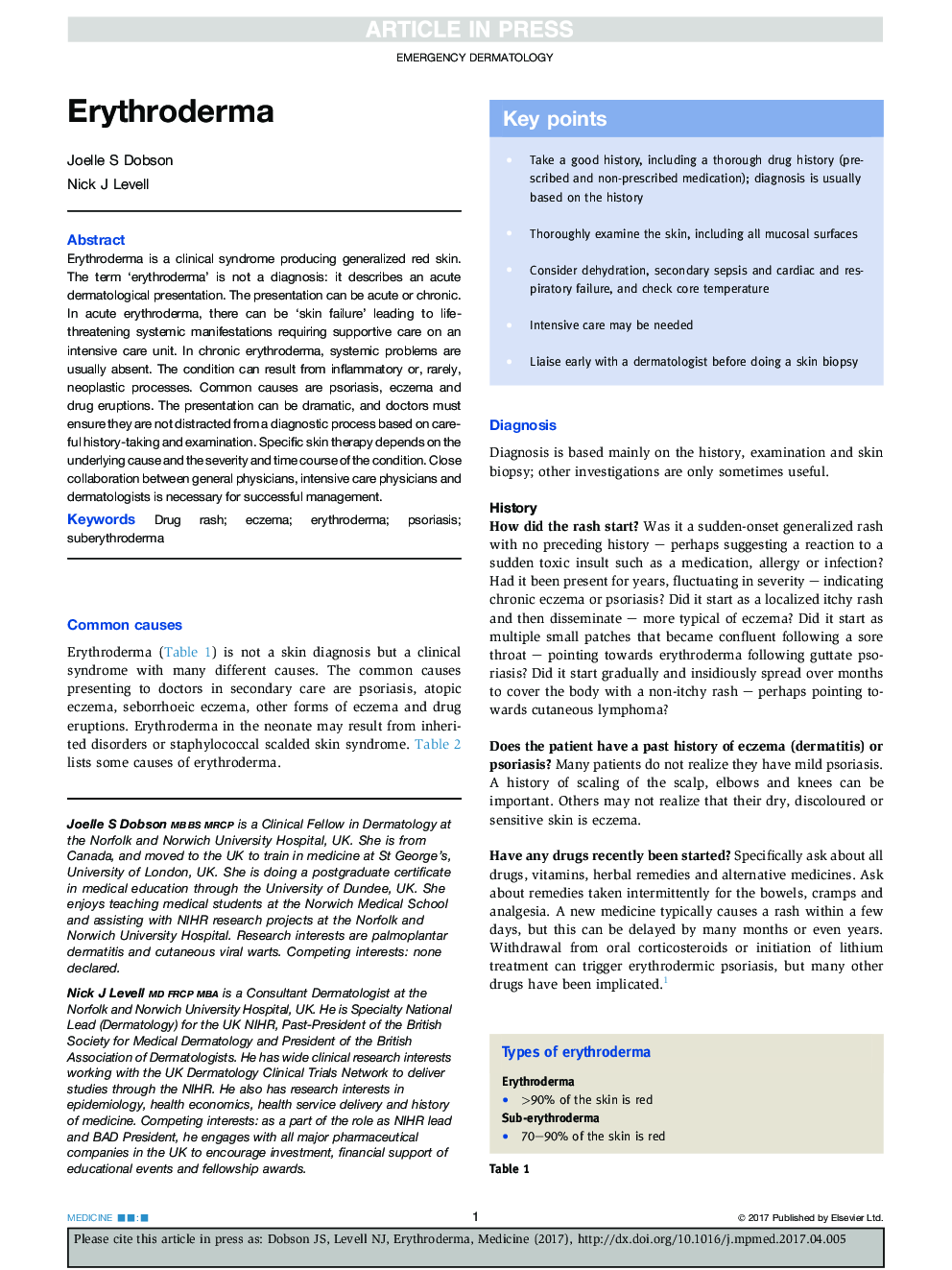| Article ID | Journal | Published Year | Pages | File Type |
|---|---|---|---|---|
| 5681188 | Medicine | 2017 | 5 Pages |
Abstract
Erythroderma is a clinical syndrome producing generalized red skin. The term 'erythroderma' is not a diagnosis: it describes an acute dermatological presentation. The presentation can be acute or chronic. In acute erythroderma, there can be 'skin failure' leading to life-threatening systemic manifestations requiring supportive care on an intensive care unit. In chronic erythroderma, systemic problems are usually absent. The condition can result from inflammatory or, rarely, neoplastic processes. Common causes are psoriasis, eczema and drug eruptions. The presentation can be dramatic, and doctors must ensure they are not distracted from a diagnostic process based on careful history-taking and examination. Specific skin therapy depends on the underlying cause and the severity and time course of the condition. Close collaboration between general physicians, intensive care physicians and dermatologists is necessary for successful management.
Keywords
Related Topics
Health Sciences
Medicine and Dentistry
Medicine and Dentistry (General)
Authors
Joelle S. Dobson, Nick J. Levell,
